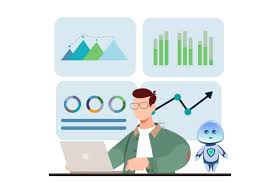Freshworks helpdesk is a well-known help desk platform with some usability issues. Many users have reported that the user interface is challenging to navigate and confusing for new users. Additionally, help requests are not always routed to the correct team member quickly or accurately, resulting in slower resolution times and decreased customer satisfaction.

Capacity’s helpdesk was built on deflection. What’s that mean? This comprehensive platform relies on AI to close over 90% of tickets before they ever reach a human. That means FAQs on your website or internal questions can give customers and employees immediate responses versus waiting for a live chat agent or an email. Get started for free here.
Jira Service Desk is an all-in-one helpdesk platform that makes it easy for businesses to manage help requests. It has many features, such as powerful ticketing and automation tools, help desk reporting capabilities, and robust integration options. Additionally, the user interface is intuitive and user-friendly.
Solar Winds helpdesk is an IT help desk system designed to help organizations streamline help requests and manage their help desks more efficiently. However, many users have reported that the user interface can be intimidating, making it difficult to find help requests quickly. Additionally, some users feel that the platform lacks certain features, such as automated ticket routing and comprehensive reporting capabilities.
ServiceNow helpdesk is designed for businesses that need to manage help requests at scale. However, the platform can be more expensive than other help desk solutions, requiring extensive configuration to get up and running. This can make it difficult for users with limited technical expertise to use the platform effectively.
Zendesk helpdesk can be challenging for smaller businesses to manage their help desk requests effectively. The platform may be overwhelming for new users due to its complex user interface and navigation, making it difficult to find specific help requests quickly. The help desk’s ticketing system is not as customizable or flexible as others.
Vivantio Pro helpdesk software is a helpdesk platform designed for businesses of all sizes. However, many users have reported that the user interface can be challenging to navigate and slow to respond to, resulting in slower help request resolution times.
Hiver’s helpdesk may be difficult for users to fully utilize, as it lacks other helpdesk platforms’ comprehensive features and automation capabilities. Additionally, help requests may not be routed accurately or quickly, resulting in slower resolution times. This is especially detrimental for businesses that need help desk support right away.
IT services, abbreviated from Information Technology Solutions, offer a comprehensive suite of solutions aimed at enhancing the administration and functionality of information technology within organizations. These services encompass a wide array of tasks, including technical assistance, software enhancement, network upkeep, cybersecurity, data management, cloud computing, and expert advice.
The primary objective of IT services is to ensure that an entity’s technological infrastructure operates seamlessly, securely, and in alignment with its business objectives. Whether it’s optimizing software applications for efficiency or safeguarding sensitive data against cyber threats, information technology services play a crucial role in enabling businesses to thrive in the digital age
This encompasses activities related to “information technologies” such as technical assistance, software enhancement, network upkeep, cybersecurity, data administration, cloud computing, and advice, all of which are indispensable for managing and operating within companies. Emphasizing the critical role of managing IT services in this context, these encompass a comprehensive suite of support functions that ensure the seamless functioning and optimization of information technology resources.
IT services streamline procedures, automate functions, and optimize processes, leading to heightened productivity and diminished expenses. Lowering the perplexity of IT operations is crucial here, indicating a smoother prediction and management of workflow patterns.
IT services aid companies in capitalizing on digital technologies to revolutionize procedures, boost agility, and conform to evolving market dynamics. Understanding burstiness within data patterns assists in adapting Information technology services to sudden spikes or fluctuations in demand.
By leveraging IT services competently, companies can set themselves apart in the market, react swiftly to customer demands, and secure a competitive edge over competitors. Burstiness analysis helps in anticipating market trends and adjusting IT strategies accordingly.
When it comes to utilizing technology to improve organizational operational efficiency, IT services are essential. These services simplify a range of corporate operations through the use of automation technologies, infrastructure improvements, and software solutions. They might, for example, put enterprise resource planning (ERP) systems in place to combine and simplify supply chain management, finance, and human resources. Employees can concentrate on higher-value work by automating repetitive operations, which further eliminates errors and manual labor.
By giving users access to cutting-edge resources and knowledge, IT service and support services not only increase productivity but also stimulate creativity. Businesses can create new goods, services, and procedures by utilizing cutting-edge technology like data analytics, the Internet of Things (IoT), and artificial intelligence. By using IoT sensors in manufacturing processes, for instance, predictive maintenance can be enabled, which lowers downtime and boosts overall productivity. Furthermore, data analytics technologies may offer insightful information that promotes wise choices and creative answers to problems facing businesses.
By cutting expenses, making the most use of available resources, and raising output, IT services help to maximize return on investment (ROI). These services make sure that investments in technology yield real returns on the company through methods including automating resource optimization, reducing costs through the adoption of cloud computing, and continuously measuring performance. Through the quantification of the impact of IT projects on critical business outcomes, organizations may make data-driven decisions to efficiently manage resources and prioritize expenditures.
Although technology adoption has many advantages, there are some drawbacks as well. These include managing risks, ensuring alignment with company objectives, and dealing with opposition to change. By applying change management methods, reducing the risks associated with technology adoption, and coordinating IT activities with more general business objectives, IT services play a critical role in overcoming these challenges. Stakeholder engagement, training initiatives, and efficient communication all aid in reducing resistance to change, and strong risk management frameworks guarantee that any hazards are recognized and avoided before they become serious problems. Organizations can also make sure that technology investments promote long-term growth and competitive advantage by carefully coordinating IT projects with strategic business objectives.
Over the years, the demand for cybersecurity solutions, growing digitization, cloud computing usage, and the introduction of new technologies like AI and IoT have all contributed to the enormous expansion of the worldwide IT services market. The market is anticipated to keep expanding as companies invest in technology to boost productivity, creativity, and competitive advantage across a range of industries.
Managed Service Provider near meManaged services, cybersecurity, cloud computing, consultancy, system integration, and other industries make up the market for IT services. Prominent global corporations such as IBM, Accenture, Microsoft, and Deloitte, together with startups and specialized IT firms focused on certain IT service domains, constitute the industry’s key players.
IT services can be categorized into multiple groups, according to an analysis. These include “systems and services technologies” such as cybersecurity (identifying threats and protecting data), cloud computing (SaaS, IaaS, and PaaS), managed services (outsourcing IT and managing infrastructure), IT consulting (providing strategic IT advice and digital transformation), and system integration (fusing various systems and technologies).
Various players have varied market shares within each category of IT services. For instance, Amazon Web Services (AWS), Microsoft Azure, and Google Cloud rule the cloud computing space, while Symantec, Cisco, and Palo Alto Networks are well-known names in cybersecurity.
The use of hybrid and multi-cloud settings, growing cybersecurity concerns, the demand for digital transformation services, and the spread of AI and machine learning technologies are some of the major growth drivers in the IT services market.
Edge computing, blockchain, IoT, AI, and other technologies are changing the face of IT services. With the help of these technologies, service providers can create creative answers to changing customer demands and market obstacles.
Understanding the range of products and services that are available to help businesses manage and optimize their IT applications, infrastructure, and operations is essential to understanding the IT services landscape. Managed services, cybersecurity, cloud computing, consulting, system integration, and software development are just a few of the many services provided. All these services serve different purposes in handling different aspects of IT management and technology enablement within businesses.
Starting with a thorough assessment of your organization’s IT needs will help you determine your business needs. The evaluation ought to cover infrastructure, software, security, and support requirements, pinpointing domains where outside knowledge or resources could be needed to supplement internal capacities. Setting definite goals and objectives for hiring IT services is crucial after your requirements are identified. These objectives might include boosting cybersecurity posture, increasing operational efficiency, implementing cloud computing, or using technology to support particular business results.
When assessing IT service providers, there are some important factors to think about. These consist of knowledge, experience, standing, caliber of services, scalability, reach across geographies, capacity for compliance, and fit with your company’s goals. To make sure they fit your needs and your budget, it’s critical to carefully examine the service offerings and cost structures of several suppliers. To stay clear of any hidden fees, look for companies that offer transparent pricing structures and flexible pricing patterns.
Making educated decisions in the IT services industry requires keeping up with technological developments. Artificial intelligence, blockchain, edge computing, the Internet of Things, and quantum computing are some of the technologies that will influence IT services in the future. It is essential to comprehend the potential effects these technologies may have on your company’s operations and competition. If these technologies match your strategic objectives and provide measurable advantages, think about assessing or implementing them.
The effective deployment and continuous administration of IT services need to comprehend service agreements, including terms and conditions and service level agreements (SLAs). Service agreements give clarity and alignment throughout the engagement by outlining the rights, obligations, and expectations of the client and the service provider.
Terms and conditions governing the parties’ overall relationship are usually included in service agreements. These conditions encompass things like payment terms, confidentiality, intellectual property rights, dispute resolution procedures, and termination provisions. These definitions help avoid misunderstandings and offer a legal basis for the rendering of services.
SLAs, or service level agreements, set forth precise performance measures, goals, and duties about the provision of services. SLAs specify criteria like uptime assurances, support request response times, issue resolution timelines, and sanctions for missing predetermined goals. SLAs assist in making sure that services fulfill the requirements and standards of the client by establishing explicit expectations and accountability procedures.
Creating a thorough plan to guarantee a seamless transfer and integration of IT services into the client’s environment is part of the implementation planning process. Key stakeholders should be identified, project schedules and milestones should be defined, resources should be allocated, and communication channels should be set up to facilitate continued cooperation.
Coordination between the service provider and the customer, good change management techniques, and stakeholder participation are necessary to ensure a seamless transition and integration. Identifying possible roadblocks, such as resource limitations, reluctance to change, or technical compatibility concerns, and creating proactive mitigation plans to overcome them are all part of managing risks and challenges throughout implementation.
Continuous IT service monitoring is necessary to spot security risks, pinpoint performance problems, and improve service delivery. This means monitoring the system’s health and availability, getting user feedback to pinpoint issue areas, and routinely reviewing the key performance indicators (KPIs) specified in service level agreements (SLAs).
The examination of performance data, the identification of potential areas for improved efficiency or better services, and the implementation of the required adjustments are the procedures involved in optimization and improvement methods. Upgrading infrastructure, optimizing workflows, or using novel technologies may be important to effectively address the changing demands of the client.








.jpg)

.jpg)
0 Comments
You are welcome to share your ideas with us in comments.
Emoji